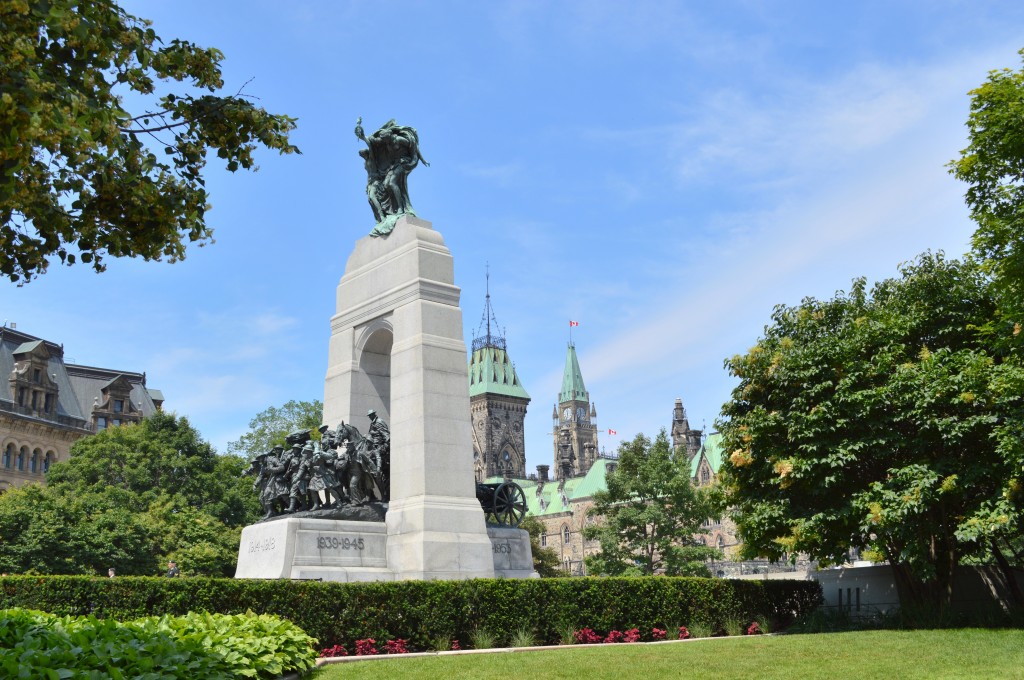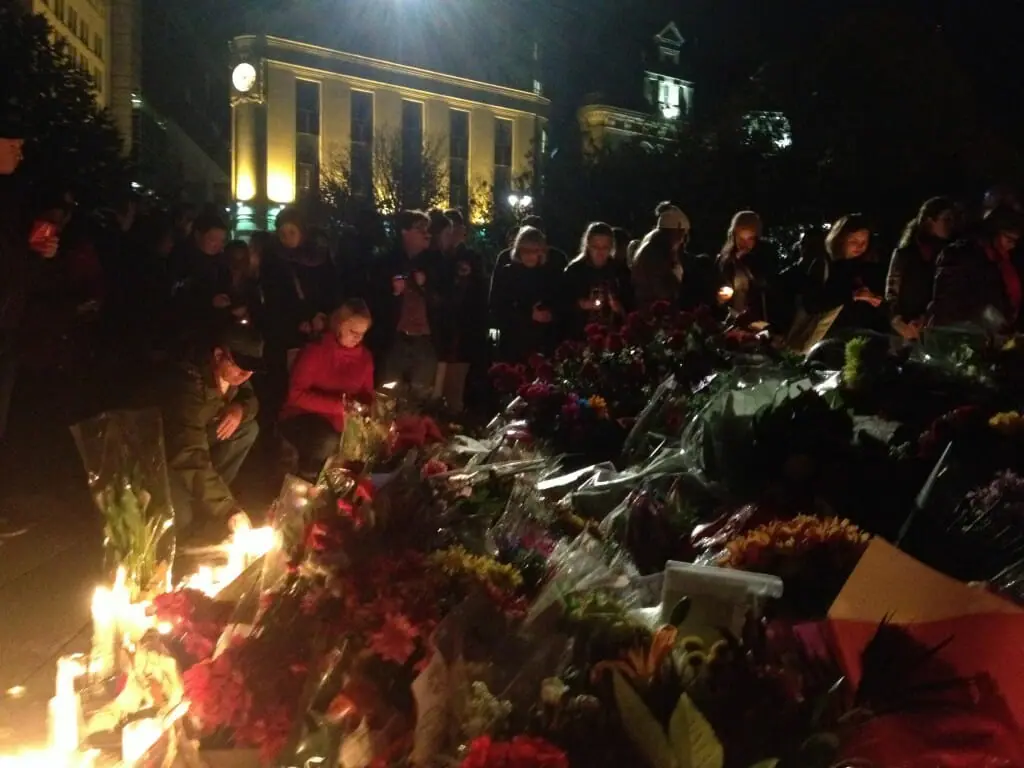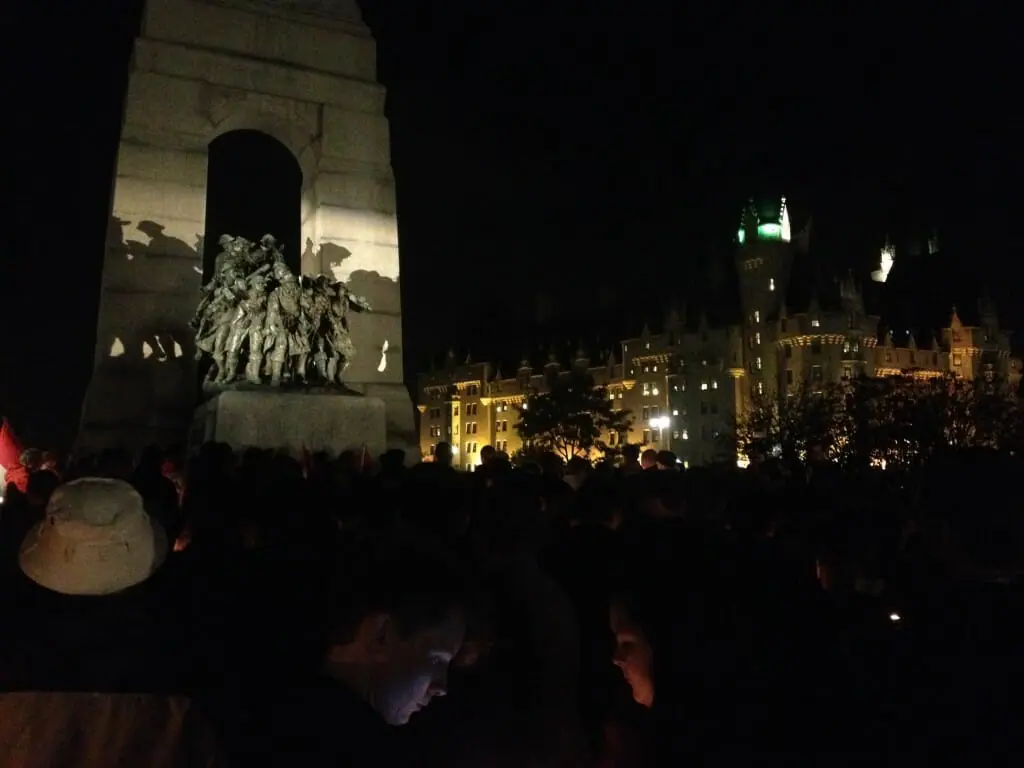
It was while sitting in the basement of a Halifax library that my phone started to buzz. Within minutes, the screen was filled with dozens of alerts about shots being fired on Parliament Hill and a shooting at the National War Memorial.
Each new development felt more surreal. Looking up the CBC live stream with shaking hands, the Ottawa shown on the screen was not something I recognised.
This Ottawa looked like a war zone. Footage showed armoured trucks, police at street corners with their weapons brandished, and Parliament security running at full tilt past reporters: this was not the Ottawa that I knew.
I spent this past summer working as a Capital Heritage interpreter for the Department of Canadian Heritage. Along with a fantastic team, we stood outside in the blazing sun and the pouring rain for four months.
We found ourselves in the middle of crowds of thousands on Canada Day, and without any human contact during an August cold snap.
Stationed throughout downtown Ottawa, it was up to us to explain the history and development of Canada’s capital. Along with the inevitable questions of bathroom location and where to find Parliament tour tickets, of course.
Of all the places where we worked, giving explanations and directions, it was the hours spent at the National War Memorial that were always my favourite.
Standing in the sweltering heat under the imposing shadow of the granite monument, it was an honour to explain Canada’s military history to visitors.
No matter if we were talking to a bus of Japanese tourists or to a small family from just outside of Ottawa, people never ceased to be struck by the importance of the Memorial.
What shocked many was the fact that Canada’s territory hasn’t been threatened by a foreign military in some 200 years. Yet we have gone to war time and time again in defence of others.
Regardless of the heat, the pouring rain or the intrusive crowds, there were always two others with us at the Memorial: two sentries standing guard at the Tomb of the Unknown Soldier.
They would stand without flinching for an hour at a time, before being replaced by another pair.
Coming off duty, soaked in sweat and with the imprint of their berets sunburned onto their foreheads, the sentries were unfailingly kind and were always excellent company.
Smiling in photo after photo with tourists, they would explain their pride at being able to pay their respects to the Memorial and serving as representatives of Canada’s military.
It truly breaks my heart to know that Corporal Nathan Cirillo, while standing guard at the monument that pays homage to those who lost their lives in defence of our country, became the victim of such a senseless act of terror.
Since the terrible events of Wednesday, Oct. 22, there has been much talk of Canada “losing its innocence.” This couldn’t be more wrong.
Cpl. Cirillo was standing guard in front of a monument paying tribute to the lives of over 110,000 Canadians who died overseas fighting for the freedom of others.
He was standing beside the Tomb of the Unknown Soldier, which contains the body of an unidentified First World War soldier and honours over 28,000 Canadians whose final resting place is unknown.
These are not the landmarks of an “innocent” country. These are the landmarks of a country that stands as an emblem of freedom and tolerance throughout the world, and that has repeatedly answered others’ calls for help.
Wednesday’s events will not change that.
We spoke to an incredible range of visitors to the capital this summer. No matter where they were from, there was a common reaction of delight at how open and accepting the heart of downtown Ottawa is.
People could picnic and do yoga on the front lawns of Parliament. They could speak freely with members of Canada’s military, and learn about the history and government of Canada in whatever way they chose.
It is crucial that this does not change.
Cpl. Cirillo lost his life due to an act of violence that goes against everything that Canada, as a country, stands for.
“Since the terrible events of Wednesday October 22, there has been much talk of Canada ‘losing its innocence.’ This couldn’t be more wrong.”
In the upcoming weeks and months, it is so very important that we do not let this act change how we define ourselves, but instead focus on commemorating and respecting this terrible moment in Canada’s history.
Oct. 22 is a day that I, along with the rest of the country, would never want to relive. My stomach churned with the realization that good friends of mine were stuck inside Centre Block, and I watched alongside much of the world as the awful events unfolded.
Since the news first broke on Wednesday, there is an image that I have not been able to erase from my head. This image is of the two bronze figures standing proudly atop the War Memorial: allegorical symbols of Peace and Freedom.
The 17ft figures at the very top of the monument were designed to acknowledge the reasons why Canadians went to go fight in the First World War.
Within months of the monument’s 1939 unveiling, Canada was in the throes of the Second World War.
These figures are a testament to the sacrifices that Canada has undergone, and how we have developed as a country.
As talk continues of how Canada is seemingly going to change, of how as a country we will never be the same, keep these two figures in mind.
It is peace and freedom that identify who we are as a nation, and a nation which identifies the tens of thousands who have given their lives in its pursuit. It is these symbols that continue to represent us, not the acts of terror that try to take them away.





Recent Comments